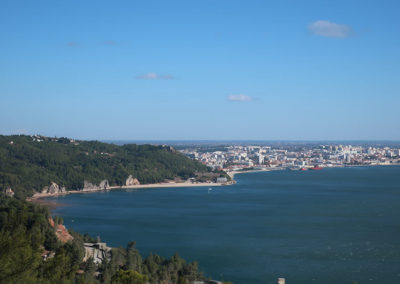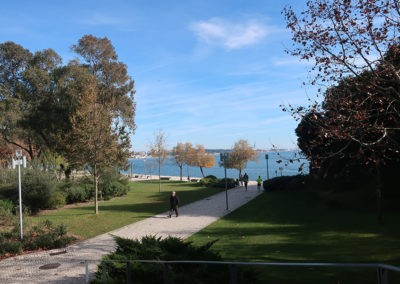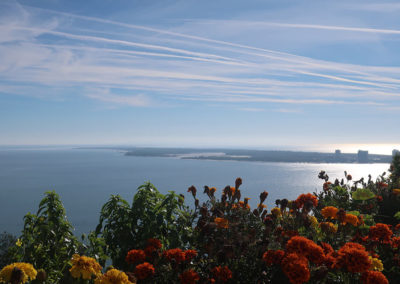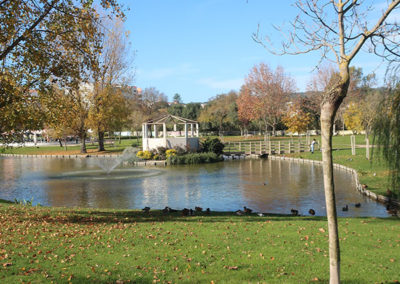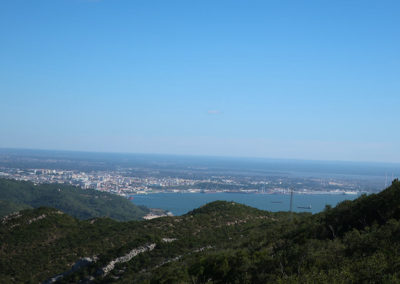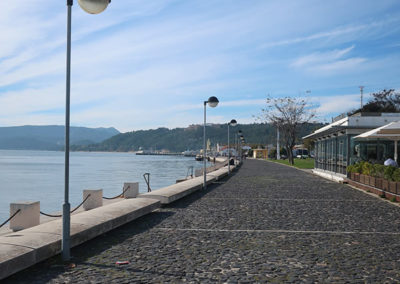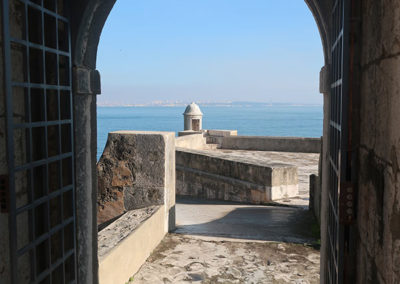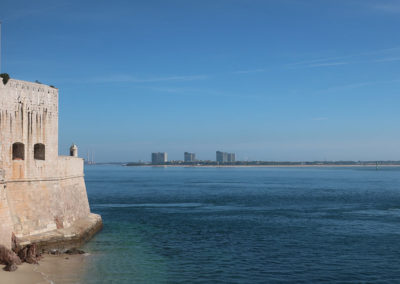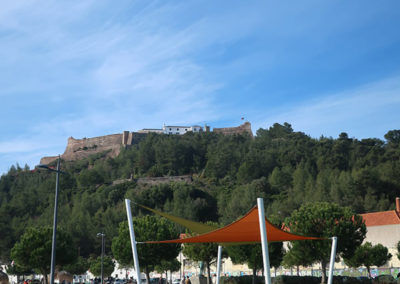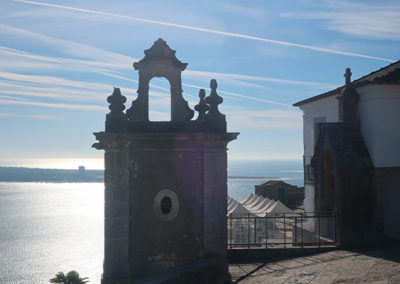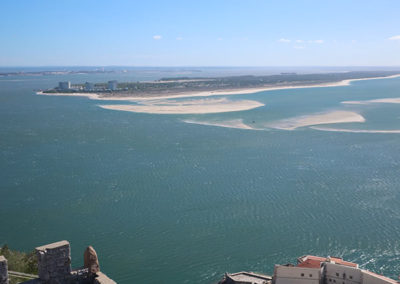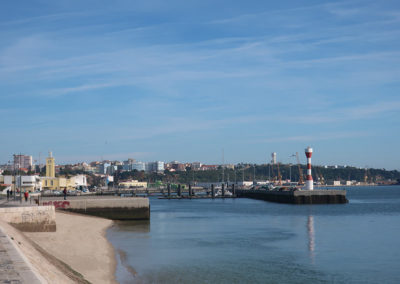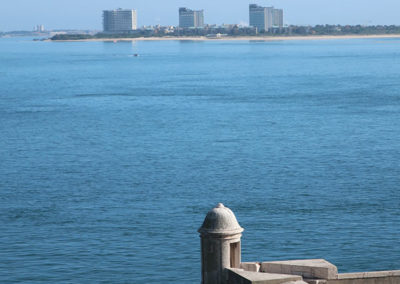The City
The Landscape
The Landscape
Setúbal, whose patron saint is the apostle of the Indies, Jesuit friar St. Francis Xavier, has a privileged geographic location. Located on the River Sado estuary it faces the Troia peninsula and lies next to the magnificent Serra da Arrábida (both integrated in a protected natural reserve area). It is associated with seventeen cities in several countries, namely Leiria, Portugal, three French cities, four Mozambican cities and one in the following countries: Germany, Safi, Morocco (it used to belong to the Portuguese), Romania, Hungary, Porto Seguro, Brazil, Tordesillas, Spain and Tarrafal, Cape Verde. This shows how its mayors are greatly concerned with developing relationships with the rest of the world, just like its Saint did once, back in the exploration of the New World era by ploughing their way through Far East countries and come into contact with their peoples.
It started out as a fishing village and attracted many Alentejo natives in the first half of the 20th century. Starting at the end of the 20th century and in the beginning of the 21st century, the city welcomed many migrants, mainly from Brazil and from Portuguese-speaking African countries (PALOP), as well as from eastern European countries many of whom settled here definitively.
We can still see many red brick towers can be seen scattered throughout the city, corresponding to the existence of many canning industry factories, which unfortunately disappeared during the second half of the 1970s, after the colonial war in Africa.
Its interesting historic centre has been under rehabilitation during the past 15 years. Now several public buildings stand out, allowing the resurgence of a cultural life of its own that can certainly be an important and decisive contribution in attracting more visitors and tourists, as well as benefiting its residents. In this chapter we should highlight the market. Perhaps one the most well-equipped and beautiful in the country, it is literally invaded on a daily basis by many native customers, foreigners and tourists, not only to appreciate the huge variety of its products, but also to contemplate the environment and the magnificent tile panels.
However, its high points are the landscapes. There are several places one should visit, such as the São Filipe Fort, the rooftop of some buildings (as some were turned into restaurants and hotels), never forgetting Serra da Arrábida. Some of the most beautiful landscapes that will leave you breathless, in particular on fogless days will allow you to view its vast horizons and fantastic beaches. Also worth highlighting is the possibility of watching sunsets or sunrises, moments that will give us absolutely intoxicating and unforgettable sensations.
Its magnificent bay was considered one of the world’s most beautiful bays in 2002 (there are several allusive landmarks throughout the city), and Galapinhos beach was considered Europe’s most beautiful beach in 2017. Setúbal has several green areas and parks, which have been going through rehabilitation lately, as well as new ones right next to the river, where you can enjoy little beaches that will make many famous major cities green with envy. We also recommend you visit the fishing port and the Moinho da Mourisca for they will make you want to try one of the many seafood restaurants, restaurants where you will find the freshest produce that can be greatly paired with a regional nectar.
3ª Sonata - Andantino
“Remember that happiness is a form of traveling, but not its destiny”
(Roy Goodman, South African writer, 20 and 21st Century)

Follow us:

Adress:
Rua Álvaro Castelões, 49 - 1º e 2º
2900-215 Setúbal
Phone: (+351) 919 385 254
E-mail: geral@homematch.pt
Google Translate











